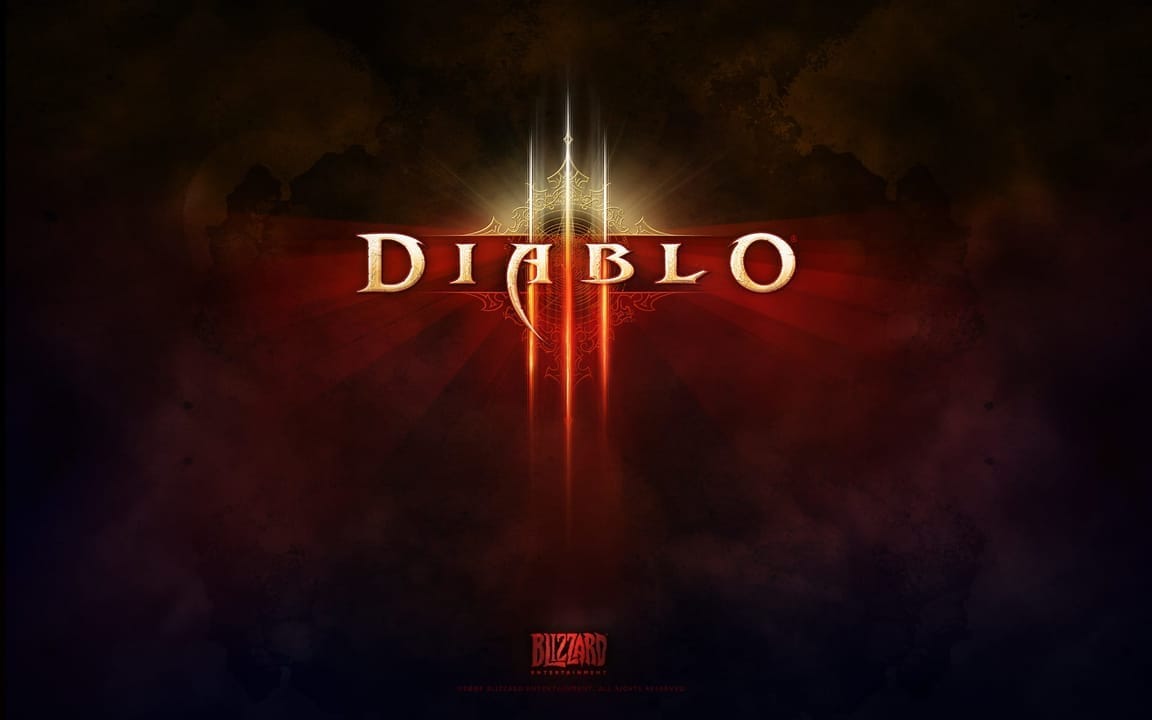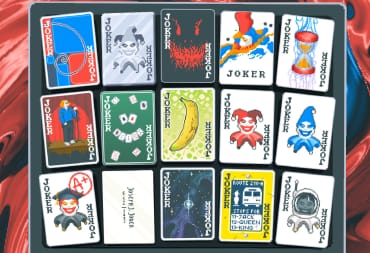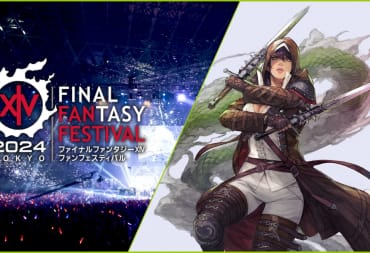When I say Diablo 3 what comes to mind? The answer to that question depends on what you've heard throughout the years or experienced, from infamous events like the always-online DRM (remember when we all threw much larger fits over it?) to the well-known Real Money Auction House. Let's run through the History of Diablo 3, and how it found itself.
What if I told you that Diablo 3 is not only still alive and kicking, but very much popular with the majority of its player base? That a healthy player base is enjoying the various new features Blizzard has provided users? You may argue "well of course, it's Blizzard, they know how to push a game. Just look at World of Warcraft," and I'd very much agree. But how? What were the sore points and what has changed from launch to now that has made the game not only passable but invigorated? And what was wrong with it in the first place?

Diablo III
Its no secret that Diablo 3 started on a rocky road. Expectations were high, not to mention that the times were different back in 2012. And there is no better testament to that, than the response fans had to always-online DRM.
Error 37
There is one sin the game committed, one that to this day remains and a stickler like me can't simply move past. The always-online DRM. Unlike past games, players were required to always be connected to the servers when they wanted to play the game, even if they were playing in Single Player.
This in and of itself would've gotten smoothed over easier, if it wasn't for the connectivity issues at launch, which led to the infamous error 37 stating "The servers are busy at this time. Please try again later." This error at launch barred players from playing the game, even in Single Player, poking at the sore spot that was the DRM.
In fact, it was considered such a problem that a French consumer group received enough complaints for them to look into it. Soon enough, Blizzard apologized for their lack of preparation and went as far as to issuing refunds to South Korean Players after they allegedly refused to do so initially. But to this day, the DRM has remained. Admittedly, nowadays it is a greatly reduced problem, unless you have an unstable connection or the Blizzard servers are undergoing issues or an update.
Nephalem Valor
Until its removal in patch 2.0.1, Nephalem Valor was a farming mechanic designed to make the end game seem more fun and exciting. Every time you killed a Rare enemy, a Champion pack, or opened a resplendent chest, you received a 30 minute buff granting you increased gold and magic item find.
With the buff active, any boss killed would drop extra loot. This could stack up to five times, which also renewed the duration even if the maximum amount of stacks was attained. The only way to lose the buff was to sit out the duration, change a skill/rune/passive or leave the game.
The main detriment to this feature were the limitations. Players disliked that this system discouraged them to experiment with their builds, opting instead to stick through it in favor of receiving more loot.
Trading and the Diablo 3 Real Money Auction House
Trading has always been an odd matter in the Diablo series. As far as most records go, trading wasn't really a concept back in Diablo I, save for maybe dropping an item in a multiplayer game for a friend while maybe that friend drops something in return. Diablo II capitalized more on it with a dedicated trading system between players in a session.
Eventually, the community as a whole decided that using gold wasn't cutting it to make trades, instead opting to use the Stone of Jordan ring and later on High Runes as a sort of faux-currency. This method of trade would later be adopted by Path of Exile, where scrolls of identification and various other usable resources make up the currency of the game without a classical currency like gold.
The Auction House wasn't a completely outlandish concept on the surface. Blizzard's successful World of Warcraft has one and is a thriving source of player trade. It was sought to be expanded upon for Diablo III, where there would not only be an auction house where goods could be exchanged for in-game gold, but a separate auction house where these virtual items could be bought or sold for real-world money.
Early on this had already brought its own share of issues. The real money auction house was widely regarded as a controversial feature and needed to be removed from the Korean release in order to not violate the Korean anti-gambling laws. Eventually, both auction houses would be removed on March 18th, 2014, an act supported by the entire team, reportedly even the "business side" of it. Since then, there has been no reliable way of trading anything between players, with many items being at the very least Account Bound, meaning they can't be given to any character outside of those made by you.
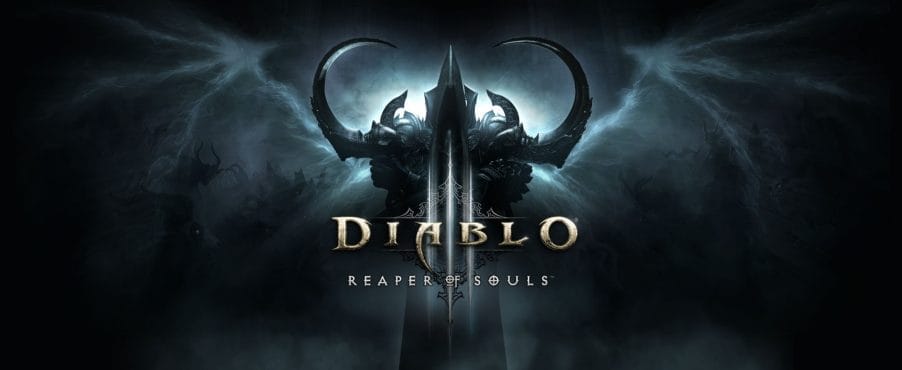
Diablo III: Reaper of Souls
As expected of a Diablo expansion, Reaper of Souls was filled to the brim with features, topped off with a single Act to extend the story. A new character class was added, named the Crusader, who was specialized in more defensive play combined with holy magic and large weaponry. However, besides a variety of other great new features, two fairly major features were added as well: Adventure mode and Seasons.
Adventure Mode
Adventure Mode permits players to explore all the regions of the entire game at their leisure, which becomes unlocked the first time ever a player completes all five Acts in story mode. In it, players can engage in five bounties over five regions per area associated with a Story Act.
The task these bounties hold can vary wildly, from killing one specific Rare enemy or a certain number of regular enemies, to completing a specific event unique to the area. Once all five are completed, players are rewarded with a Horadric Cache containing random loot, gems, crafting materials, and crafting recipes.
Seasons
Seasons are a competitive feature designed to urge players to start a new character (or restart an existing one) without access to the stash or resources of the "normal" characters. Tasked with a long list of objectives, some simple, some oddly specific, these players can earn exclusive Legendary Items that can exist out as both vanity items as well as a complete item set.
Item sets were already an important feature since Diablo II, but because of Seasons and Adventure Mode, they've gained even more importance. Most sets that have an effect specific to a certain class tend to be extremely powerful, some multiplying the damage of a certain skill by 1200%. This becomes an important advantage, as the difficulties have drastically changed, some of which factor into some Season challenges.
In Diablo I and II, you started out on Normal difficulty, unlocking Nightmare when Normal was completed, and eventually Hell difficulty when Nightmare was completed. But as of patch 2.0.1 in Diablo III, these have been replaced with Normal, Hard, Expert, Master, and Torment, with Torment being expanded for a total of thirteen further difficulties.
Most are available from the get-go, and all become unlocked once the story mode has been completed once. Aside from being required by a Season challenge to do certain things in higher Torment difficulties, the higher difficulties also come with better drop rates for legendary items and higher quality gems, including set items for any class.
Nephalem Rifts
Conquering higher and higher Torment levels also becomes a matter of prestige. If the player doesn't feel like chasing around the map in Adventure mode, they could always brave Nephalem Rifts.
These function as dungeons and have randomized regions through which you are simply tasked to wade through waves of enemies until a special energy bar is filled, after which the Rift Guardian appears and must be slain to complete the Rift. Besides being a great source for loot, completing these rifts gave access to higher level Greater Rifts.
Greater Rifts are for many the ultimate dungeon. They function similarly to regular Nephalem Rifts, but with a few vital differences. First and foremost, no loot drops during these. Instead, just like in regular Rifts, Boss and Boss packs drop progress globes that fill the progression meter.
But most importantly, you are given only 15 minutes to complete this task. This basically makes Greater Rifts a DPS race, testing the damage of your build. If you succeed and kill the Greater Rift Guardian before the time is up, you will be rewarded with loot and a Legendary Gem.
Legendary Gems that spawn from a Greater Rift Guardian function differently from their regular counterpart. They have no quality hierarchy but instead have a special effect when slotted in jewelry with a Gem slot. Furthermore, completing a Greater Rift permits you to level up a gem three to five times, depending whether you created the rift with a set monetary gamble and whether you died once while you were completing the Greater Rift.
These upgrades are not guaranteed and lower in chance of upgrading the higher level they become. However, as every Legendary Gem comes with a special trait at level 25, doing so is highly worth it.
Treasure Goblins
Borderlands 2 players may recognize an enemy type similar to what they call a "Chubby." Chubby enemies in Borderlands 2 are fat variations of regular enemies that, when slain, drop tremendous amount of loot. Diablo 3 instead opted to have a dedicated enemy for this called the Treasure Goblin. Unlike Chubby's in Borderlands 2 or regular enemies, Treasure Goblins don't ever attack the player.
They resemble small goblins carrying packs full of stolen loot and will scurry away in a hurry, dropping loot once in a while. Once defeated, they drop an impressive amount of loot.
Throughout the development of the game post-release, these Goblins have seen multiple additions and improvements. With the addition of Adventure Mode, a wide variety of these goblins can now be encountered in said mode. These can range from the self-explanatory Gem Hoarders, the Rainbow Goblin that has a chance to open a portal to Whimsydale, the Menagerist that can drop a non-combat pet, and many more.
The reason they are worth pointing out is because of the effect they have over players. Whenever one is spotted, the majority of players seem to have the irresistible urge to immediately attack and chase after them with little to no thought in a fit of greed.
Which is odd, considering loot dropped is unique to the player seeing it, as other players have different drops shown to them. It's worth pointing out that Treasure Goblins, when left undisturbed, will not start to run. This can provide valuable preparation time, permitting players to position themselves better and chase the Goblin into a corner, as opposed to letting it run into a mass of enemies and drastically risking the success of their hunt.
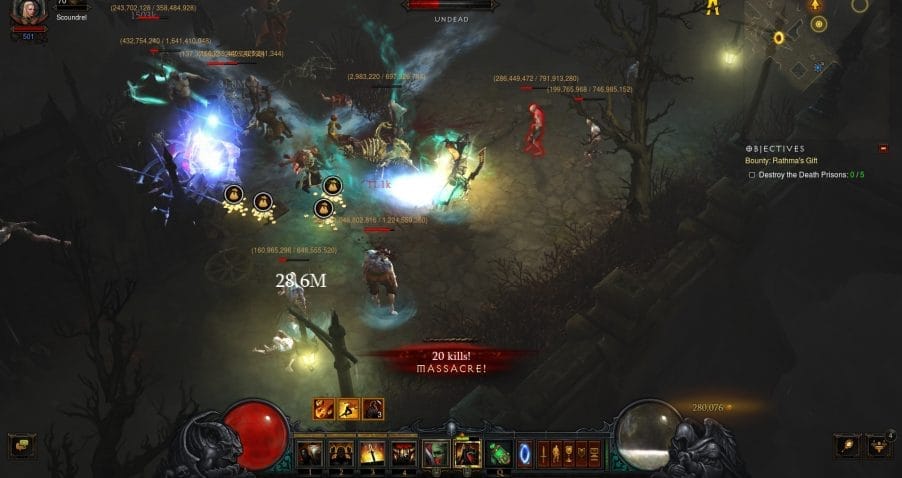
Paragon Levels
Before Reaper of Souls arrived, Paragon Levels served as a faux-leveling system for characters at level 60. Every Paragon level gave the character extra points to their stats in the way similar to regular leveling, and extra magic and gold find. This would then be capped at a 100 Paragon Levels. The system didn't sound quite that exciting, so it should come to no surprise that Reaper of Souls brought a major change to it.
Paragon 2.0 came with a wide array of changes. With the Paragon Level cap gone, it is technically possible to grind levels as far as you want, empowering your characters to your hearts' desire. Not only that, but these levels are now account-wide per game type, meaning that new characters can't contribute experience until they are level 70, but they can reap the benefits from it, making leveling new characters far easier.
And finally, each Paragon Level now gives the player one Paragon Point that they can spend in the category they've earned it in, which is a rotation of four categories. Every category has four stats that can be approved, of which all but 2 in its entirety have a cap of 50. This gives Paragon Levels a soft cap of 800, although Paragon Points given after that can always be spent on either Vitality or the class' assigned combat Stat (Strength, Dexterity or Intelligence). That said, these points can be Reset and redistributed at not cost whenever the player wishes.
Gambling, the Diablo variety
Devoted Diablo players will oftentimes be no stranger to gambling, although this may arguably be of the better variety. Spend some extra money for an increased chance at an exceedingly rare item, lose increasing amounts of money if you can't seem to get one despite many tries and don't know how to quit. Diablo 1 started out this tradition with Wirt, The Peg-Legged Boy. For 50 gold you could look at which current item he was selling, with a chance of it being a powerful weapon or item that was worth purchasing.
But Diablo 2 fans in particular will remember Gheed, the crafty traveling merchant. Besides having a normal shop, Gheed provided players with an unique method of acquiring exceptionally rare equipment: Gambling.
The premise was simple. You are presented with a shop page full of unidentified items and are offered the option of buying any of them for an expensive price. While the result was often an item of a grade not worth the purchase price, the off chance that an exceedingly rare item could be found made it a worthwhile investment for players who had excessive amounts of gold.
Diablo 3: Reaper of Souls would prove to continue the tradition. Kadala, daughter to Gheed and member of the Horadrim, offers players in Adventure Mode the option to buy unidentified goods from her. But unlike Gheed, she has an unlimited supply of whatever item type you desire. Instead, she only accepts Blood Shards as payment, which is a currency specific to her and can only be earned in a specific few ways.
This often leads to players stockpiling Blood Shards up to their maximum held, which can be raised by completing increasingly more difficult Greater Rifts, subsequently spending them all on one specific equipment type in hopes of landing a Legendary or Set item of their desire.
Kanai's Cube
Arguably the greatest game changer of them all, Kanai's Cube has drastically changed or at least improved at how character builds worked. It can either transform items or extract the power from a Legendary Item.
In terms of transforming items, this can range from reforging an item to possibly roll better stats, upgrade a Rare item to Legendary or Set and hope it's the one you want, converting a set item into a set item for a different equipment slot, removing level requirement, to converting 9 gems of one color to 9 gems of another color.
However, Legendary items can also have their powers extracted. While this destroys the item, the aforementioned power can now be equipped in the cube without the need to actually equip the item.
The caveat is that there can only be one Weapon, one Armor, and one Jewelry power equipped at any one time. This adds extra complexity and a completely new angle of power for character builds, as Legendary powers that have a power range will always have the maximized range while equipped in the cube.
History of Diablo 3 - Final Thoughts
Diablo III has come a long way. Two decades have passed, starting as a grid-based real time hack and slasher with an emphasis on dark and broody catacombs and careful gameplay, to a power fantasy that has you explore vast lands in a constant quest to become ever more powerful. But from start to finish, Diablo was always about the loot, whether you tossed it, sold it, broke it down, or kept it.
Things like the auction house will always be a controversial topic surrounding this game, but to this day it seems that Blizzard is well prepared to further support Diablo III. As of writing, the 10th Season is currently on-going and there seems to be no sign of stopping, five years after release.
Thanks to serving all their games on their centralized platform Battle.net, now renamed to simply Blizzard, rewards for achieving certain things in this game or another of Blizzard's games can lead to rewards for another. For example, completing the Reaper of Souls campaign grants you a mount in Heroes of the Storm.
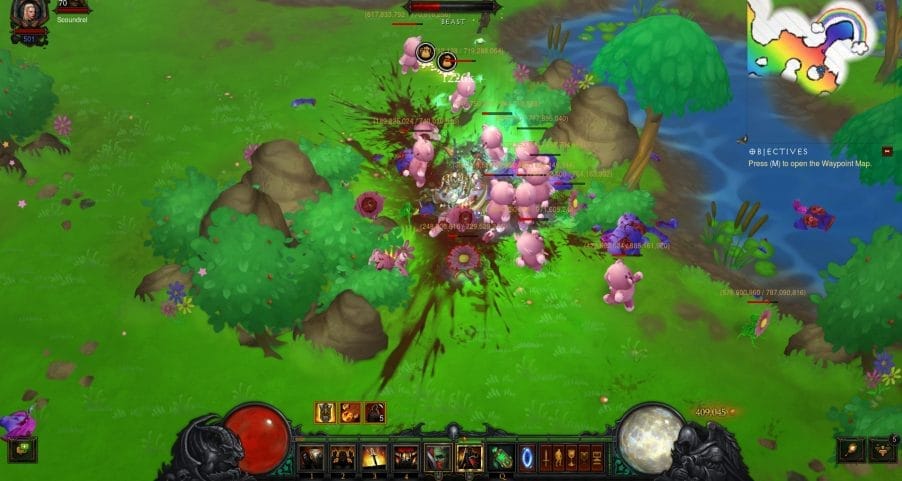
There's no telling what will happen five more years down the line. As it stands, a new pack is being made for the game, featuring a new class named the Necromancer. Depending on the sales of it, Blizzard may determine how much of their resources they spend on Diablo 3 in the future.
Time will have to tell what the future holds for Diablo III, but considering the IP was once thought dead after its lengthy disappearance after Diablo II, having something is better than nothing. Thank goodness you've returned, Diablo.
Have a tip, or want to point out something we missed? Leave a Comment or e-mail us at tips@techraptor.net
